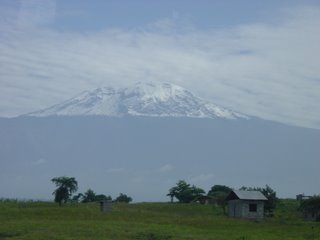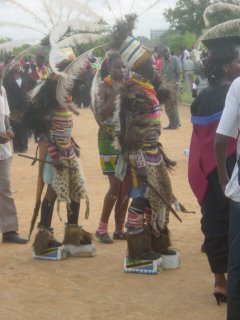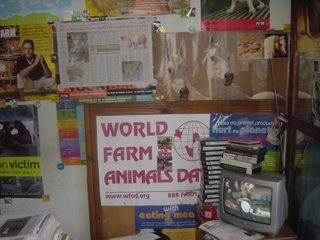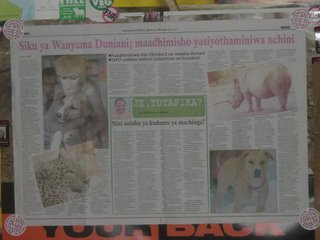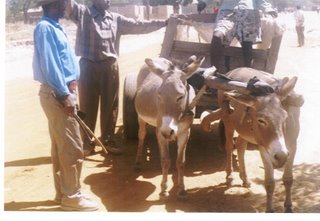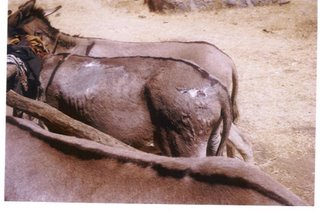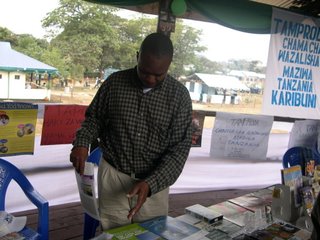POLICY OF ORGANIZATION
1. Our Beliefs
We believe that animals as living creatures are entitle to legal protection, moral and ethical consideration and have value beyond economic measurements
2. Mission; To protect all animals from Tortured, Abused, Cruelty, Diseases and Killings
3. Vision; All animals shall be respected as living being like human being
4. Aims; shall be to foster and promote the compassionate to animals, improvement and developments of any matter concerning the protection of animals, understanding and appreciation of the animals among the people of mainland of Tanzania without gating profit.
5. Objectives
1. To promote respect and compassion for Animals through our activities, Campaigns, Public and school educational programmed.
2. To develop and deliver practical advises on the prevention and control of noticeable and endemic diseases, in Tanzania livestock’s and other Animals.
3. To transform the way Animals are treated and perceived by human.
4. To make enforcement of existing Animals laws, and anti- poaching campaigns.
5. To build animal homes, shelters. Sanctuary.
6. To prevent unwanted and overpopulations Animals and Birds through our Neutering and outreach programmed.
7. To see condition in Animal Auction marts, zoos, poultry farms, Animal breeders and People’s houses
8. To provide wildlife conservation and humane education in school and public.
9. To see condition in Animal Auction marts, zoos, poultry farms, Animal breeders and People’s houses
Definition; "Animal" means all vertebrates and invertebrates other than human beings on the basis that they are capable of feeling pain.
“Animal welfare” means, concern for the well-being of an individual animal’s physical, mental and naturalness that include mitigation of avoidable suffering, injury, pain, fear, distress or stress resulting from unnatural behaviour while kept or used for work, sport, companionship, research or food
General principle
The ethical basis for TAPO’s policies is that it looks beyond the conservation of species to the welfares of individual animals. It is TAPO’s belief that each individual has an intrinsic value and should be respected and protected.
Animals have biologically determined instincts interest and natures, and can experience pain, thus TAPO believes that animals have the right to live their lives free from avoidable suffering at the hand of humans, rather than be used be simply as “ raw materials” for the benefit of mankind. Indeed, TAPO believes that it is the duty of human to provide for the welfare of other species.
TAPO believes that all animals kept by, or under the control of humans must be kept in circumstances appropriate to their species, further, where the physiological and behavioural needs of species cannot be met, the species must not be kept by man.
TAPO believes that where the welfares of an animal are under human control is in question, and then the animal must be given the benefit of any doubt. Furthermore, the difference purposes for which animals are used must be regularly re- evaluated.
The welfare of an animal can be described as good if the individual is fit, healthy and free from suffering
TAPO assesses the welfares of animals using five freedoms
1. Freedom from hunger and thirst
2. Freedom from discomfort
3. Freedom from pain, injury and disease
4. Freedom from fear and distress
5. Freedom to express normal behaviour
These represent a useful ‘checklist’ to quickly identify situations which compromise good animal welfare- that is, any situation that cause fear, pain, discomfort, injury, disease or behavioural distress.
Welfare is a consideration only to living animals- the method of killing animals is critical as it can often cause extreme pain and distress before death intervenes, rather than an instant humane kill.
Protecting animals involves the prevention of unnecessary suffering, ensuring a good quality of life or a humane death. The key difference between conservation and animal welfare is that conservation focuses on species, population and habitats, where as animal welfare focuses on the individual animal.
6. HUMANE KILLING
6.1 Humane slaughter
TAPO is opposed to inhumane method of killing notwithstanding religious dogma and ethnic custom. An animal must be either killed instantly or instantaneously rendered insensible to pain death supervenes.
TAPO recognises that animal of all species must be killed from time to time and demands that when this is necessary it be performed humanely.
Handling of animal prior to killing must also be humane and as stress free as possible. Electric prods or goads must not be used and pre-killing procedure must be considered an integral part of the killing process.
Killing by euthanasia must be done when
· The destructive of diseased, injured, depilated animals which cannot be cured and whose infection involves permanent and serious disability.
· Accident.
The method of killing will vary according to species and circumstances. Some procedures regularly used include cutting the neck of animal without stunning, mechanically operated instrument, instrument stunning by electricity. All method must satisfy the same basic criteria such as
· Death without panic, pain or distress
· Instant unconsciousness followed by rapid death without regaining consciousness
· Reliability for both single or large numbers
· Simplicity and minimal maintenance
· Minimal detrimental impact on operators or observers
The skill of operator is vital for the humane killing of animal and they must have appropriate training in;
· Animal handling
· Selection of best killing method
· Application of killing method
· Maintenance of equipment
7. WORKING ANIMALS
TAPO believes that working animals must be treated with consideration and must be given adequate shelter, care, food and water. Any condition that may impair their welfare must be treated promptly, and if necessary they must not be worked again until they are fit. They must not be overworked or overloaded, nor must they be forced to work through ill treatment
All working animals shall be provided accommodation, care and attention that take account of its physiological and behavioural needs including appropriate food and water, shelter, exercise and companionship. Also working animals shall be ensured of the veterinary health and maintenance needs of the animals including as necessary for the species, regular health and fitness checks, regular grooming, farriery treatment for interval and external parasite.
All working animals must be provided full proper harnessing materials for loading and carts pulling, whereby the axle and bearing must be maintained to be easy for animal to pull without all cart and load weight goes to an animal.
8. COMPANION ANIMAL
TAPO approves of the keeping of companion animals only when there is full personal commitment to the welfare of animals. The animals must always be provided with shelter, exercise, care, food and water appropriate to their physiological and behavioural needs.
TAPO is opposed in principle to all mutilation on companion animals carried out for non-therapeutic reason. It also condemns selective breeding in a search for certain external features that affects the health and welfares of the animals
9. TRANSPORTATION OF ANIMALS
TAPO is opposed to a method of transportation of animal that causes unnecessary stress, pain or suffering. TAPO will only accept the transportation of animal in vehicle especially designed for the needs of the species carried
9.1 Transportation of Food Animals
Because of the inevitable suffering associated with the transport of animal, TAPO supports the humane slaughter of food animals as near as possible to the point of production. Transportation by sea for food animals destined for slaughter should be forbidden except where it is necessary to reach the nearest slaughterhouse.
No animal, which is ill or unfit, should be allowed to travel. In addition, proper selection of stock must take place to remove ill or unfit animal. Selected stock should be prepared to help withstanding the rigors of transport, and the vehicles or vessel should be specifically designed for carriage of the particular species involved
All drivers of livestock’s and other animals should be trained both in necessary during techniques and the general care of the animal in their charge, whereby vehicles and their fitting shall be designed, constructed, maintained and operated so as.
· Avoid injury of suffering to ensure the safety of the animals, they shall be free of any sharp edges or projection
· Protect the animals from inclement weather.
· Preventing the animals escaping or falling out
· Have a floor which is ant-slip and sufficient strong to bear the animals collective weight
· Provide access to the animals to enables them to be inspected and cared for as and necessary.
· Have food and water
Where the loading of animals must be carried in humane manner without beating, and packing shall be carried to ensure that the animals are able to turn round, to seat and standing freely without pushing each others
Transportation of poultry should be in a humane manner, whereby TAPO oppose the transportation of chickens and other birds through the following ways
· Chickens and other birds tighten together their legs on the bicycles, roof of vehicles or in carts.
· Carriage of chickens and other birds to their wings or legs for the head to point downward.
· Overloading of chickens and other birds in the local made basket {matenga} like stone.
· Transportation of chicken and other birds in the boot of the regional buses
During the journey the animals must be given food, water and veterinary care throughout the journey and the end of the journey the animal must be unloaded in humane manner.
9.2 Export of live Food Animals
TAPO is opposed to the export of live food animals for immediate slaughter or further fattened and advocates the adoption of chilled and frozen meat-only trade. TAPO will work to pressure Tanzania government to achieve the conversion of the live export trade to chilled and frozen meat-only trade.
10. WILD ANIMAL
TAPO is in principle opposed to the killing of wild animals or the infliction of suffering upon them. This includes taking and killings of wild animals for the purpose of spot.
TAPO is absolutely opposed to taking and killing wild animals for purpose not essential to humans or the welfare of the animals, particularly when they do not pose a threat to the safety and security of humans.
In circumstance where it is deemed necessary to control wild or stray animal population, or animal considered to be pests, then TAPO urges that to be achieved without the infliction of avoidable suffering.
TAPO consider that an effective method should be used to avoid the need continually to remove or kill animal fertility control or other non-lethal methods should be used wherever possible rather than” catch and kill” system.
TAPO is opposed to the use, confinement, exhibition or performance of animals for commercial gain/or human entertainment. Where the taking and /or keeping of wild animals is still permitted, TAPO believes that this should be strictly limited under licence and controlled at the highest possible humane level.
11. FARM ANIMALS
TAPO advocates that method used all stage of farm anima husbandry must be developed so as to prevent avoidable suffering. Farm animals must be provided with shelter, exercise, food, water and care in a manner appropriate to their physiological and behavioural needs. TAPO is opposed to any method of husbandry that does not full fill these criteria such as,
· Keep tethered in building pens, cages or the like.
· To cause any unnecessary pain, suffering or distress to or abandon an animals
· Not providing for the manner in which species or categories of animals are to be kept including the manner in which animals shall be tied or tethered, and the manner in which animals shall be segregated according to age, sex or species.
12. ANIMAL WELFARE EDUCATION
Animal welfare education {AWE} is a process, which promote knowledge, skills, understanding and attitudes related to our involvement in the lives of animals, the effects this has on animals ability to satisfy their needs and responsibility Place on us. TAPO support that providing animal welfares education to the people will reduce animal suffering and enhance welfare.
TAPO agree that the best way to keep the world better place to live is teaching humane education to the students, whereby humane education {HE} is a broad discipline that encompass all forms of education about social justice and citizenship, environmental issues, the welfare of animals and their care. HE is unique in that it recognises the interdependent of all living things.
Though humane education children’s attitudes and critical thinking skills are developed in order to become more compassionate and to respect everyone, their own family, their community and those from different cultures.
Humane educaton provides an opportunity for children to develop a sense of awe and responsibility for the natural world and their environment and for the animal in which share it.
TAPO insists that Humane education shall be introducing in education curriculum of all school found in Mainland of the United republic of Tanzania.
Revised September 2006
































